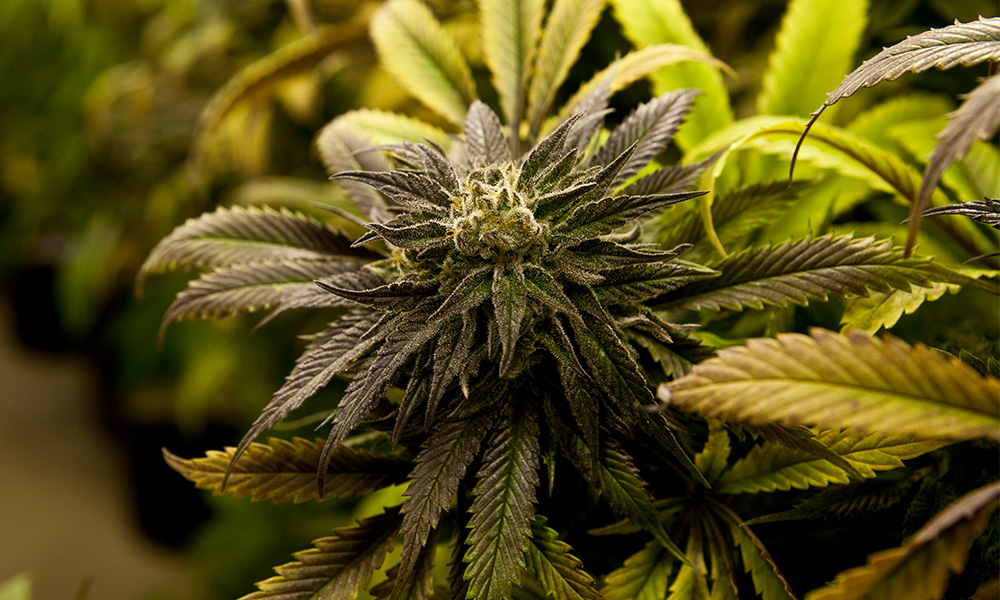
Economics
Marijuana Legalization Means a Buyer’s Market
Even cheap cannabis may carry a high cost.
For most recreational marijuana consumers, the difference between a $60 top-shelf eighth and a $20 door-buster isn’t the strain name. It isn’t who grew it, the strain’s genetic lineage, its terpene count, nor the THC number printed on the state-mandated label.
It’s much more fundamental than that. The crucial separating factor between the top-shelf and the ho-hum weed is exactly $40 — which is why in most situations, the cheaper cannabis is the more popular cannabis.
Driving this point home, I recall an anecdote a northern California grower and dispensary operator once told me. He put the same strain into two different jars. One had the regular price. The other had a warning label — like a skull-and-crossbones —and was half-off. The half-off “danger weed” sold like crazy.
All this to make the mind-numbingly obvious, intelligence-insulting observation that price matters significantly to marijuana consumers — and matters more so than most to the daily or near-daily users who account for close to 80 percent of total consumption.
This means, generally speaking, legalization has been great for the marijuana consumer, who is currently enjoying solid product at a record-low price. (It has not been nearly as friendly to the marijuana producer, but that’s a separate story and one not top on the list of priorities for a buyer.)
This buyer’s market was legalization’s grand promise, as RAND Corporation marijuana researcher Beau Kilmer recently wrote— and from the consumer’s end, it’s a promise that’s been mostly fulfilled.
“The market price of cannabis plummets with legalization,” Kilmer and Mark A. R. Kleiman, a professor of public policy at New York University, observed.
“High-potency illicit cannabis typically costs more than $10 per gram,” they wrote. “The average legal-market prices in Washington and Colorado (after taxes) are now well below that, with highly potent but less fancy ‘bargain bud’ available, with quantity discounts, for less than $3 per gram.”
And indeed, “[p]rices are the lowest we have tracked,” said Jonathan Rubin, CEO of cannabis sales-tracking firm Cannabis Benchmarks, in an interview with Leafly News last year — and that was before the fall outdoor harvest came in.
The observations that legalization has led to a buyer-friendly bounty contradicts prevailing wisdom in other corners of the cannabis industry. Here, experts declarethat unlicensed, illicit, or “gray market” companies are undercutting legal cannabis outlets by up to 50 percent by avoiding taxes, testing their product, or other cumbersome regulations.
This is true to a point: Avoiding regulation is absolutely a way to do business more cheaply — ask Uber or Airbnb about that — but operators dodging the law are also interested in profit. They require higher prices to compensate for the higher risk.
But as the experiment with the jars proves, not the intricacies of regulation nor how much the supplier paid in taxes matters much to the end user, who is concerned above all with cost-effectiveness.
What they will care about is the “rigorous competition” required to keep end-user cannabis prices low, which has been lacking in some jurisdictions where regulations limit the number of retail outlets, restrict them so tightly few open, or ban them outright.
In instances like this — including a majority of jurisdictions in California, which have banned dispensaries outright — there is no rigorous competition, and thus prices may be artificially inflated for inferior product.
Here, too, the illegal producer may find market share. According to one estimate,California’s $3 billion worth of legal cannabis sales was only 20 to 25 percent of all marijuana purchases in the state. Whether dispensary bans or lax enforcement on illegal operators making open sales is more to blame depends on who you ask, but again, the clear winner who emerges here is the end consumer, who has a broad array of options from which to choose.
What’s not clear is where, exactly, the floor is located. How cheap can cannabis be sold while still offering some measure of quality and reliability to the consumer, a living wage to the worker, profit to the entrepreneur, as well as some tax revenue for the lawmaker? Whatever the number is, it will change again when and if interstate commerce is legalized and one state’s surplus can be sold in other markets. That may spell yet another round of woes to marijuana producers. But for the consumer, it will be yet another discount jar — no warning label required.
TELL US, what is the price of an eighth where you live?


























